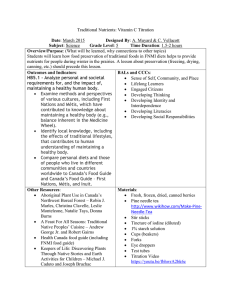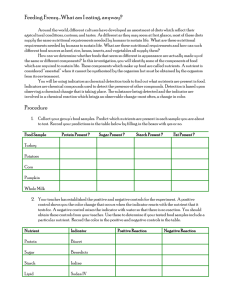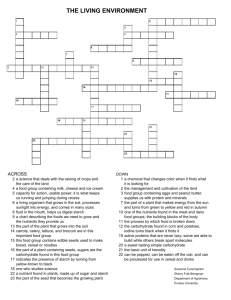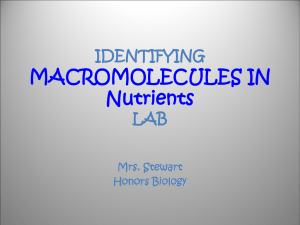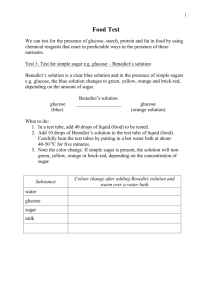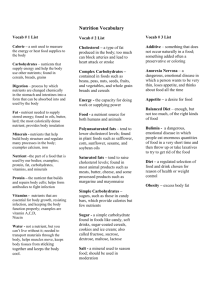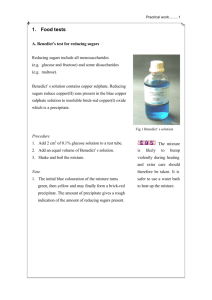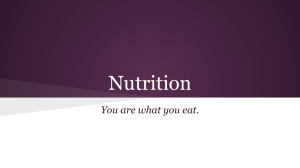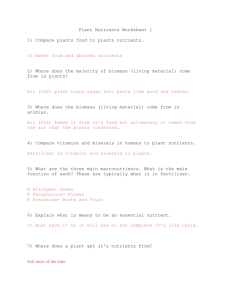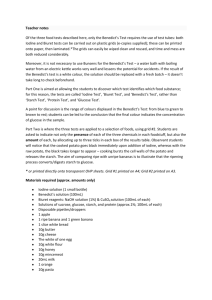LAB - SCBio12
advertisement
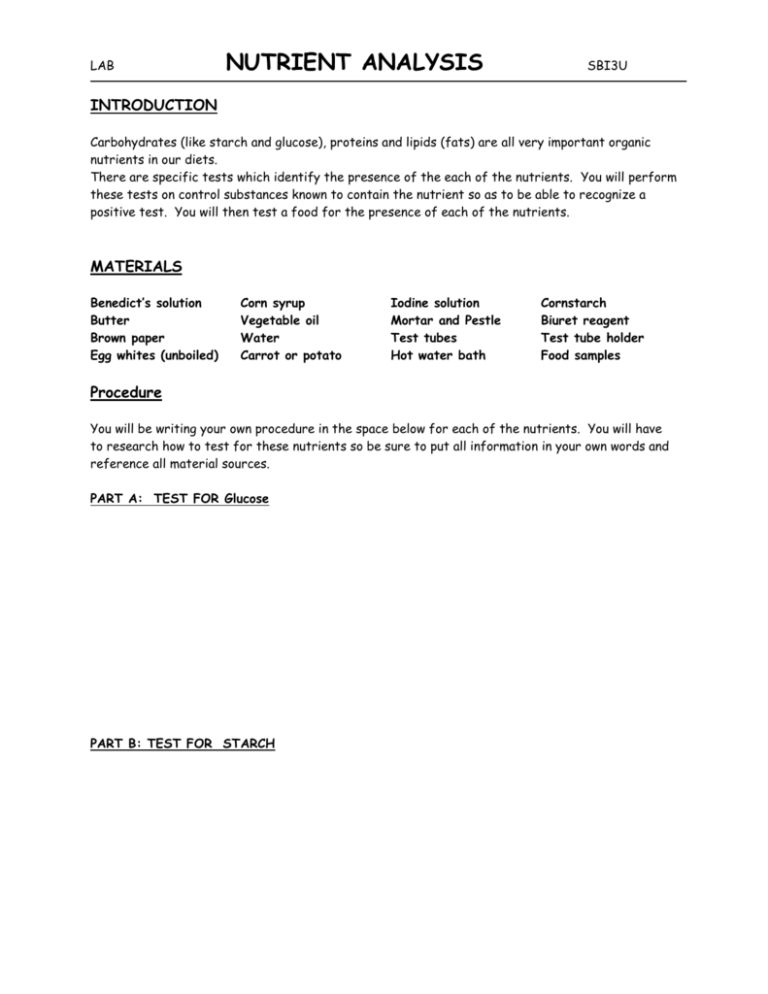
LAB NUTRIENT ANALYSIS SBI3U INTRODUCTION Carbohydrates (like starch and glucose), proteins and lipids (fats) are all very important organic nutrients in our diets. There are specific tests which identify the presence of the each of the nutrients. You will perform these tests on control substances known to contain the nutrient so as to be able to recognize a positive test. You will then test a food for the presence of each of the nutrients. MATERIALS Benedict’s solution Butter Brown paper Egg whites (unboiled) Corn syrup Vegetable oil Water Carrot or potato Iodine solution Mortar and Pestle Test tubes Hot water bath Cornstarch Biuret reagent Test tube holder Food samples Procedure You will be writing your own procedure in the space below for each of the nutrients. You will have to research how to test for these nutrients so be sure to put all information in your own words and reference all material sources. PART A: TEST FOR Glucose PART B: TEST FOR STARCH PART C: TEST FOR PROTEIN PART D: TEST FOR FAT NUTRIENT ANALYSIS LAB SBI3U TABLE 1: TEST FOR FOOD NUTRIENTS SUGAR STARCH FAT PROTEIN FAT PROTEIN POSITIVE TEST NEGATIVE TEST TABLE 2: NUTRIENT IN FOOD SAMPLES FOOD SUGAR STARCH Discussion 1. What are the monomers that make up each type of macromolecule tested? 2. A very thin slice is removed from a peanut, crushed with a mortar and pestle then smeared on a piece of brown paper. Then a drop of Biuret reagent is added to the peanut slice. When you examine the peanut slice under a microscope, patches of blueviolet are visible. What conclusions can you draw from your examination? 3. A cracker crushed in water will test positive with iodine but negative with benedict’s solution. A cracker crushed in water has another chemical called amylase added to it. After a few minutes, this cracker tests negative with iodine and positive with benedict’s solution. Explain what happened.
